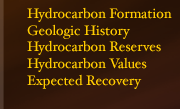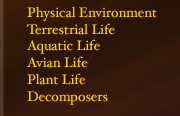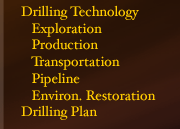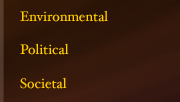
Environmental Implications - Other Bears
Land mammals that are "most likely to interact with or be affected by the proposed operations (drilling) are river otters, black bears, and brown bears" (4).† Brown bears use the coastal areas from April to November, relying especially on coastal meadows, beaches, and shorelines for food (4).† As they feed on salmon, and other fish, uncontaminated water sources are essential to their survival, especially during summer and early fall when brown bears "congregate along coastal streams" (4).† Therefore chemical runoff of drilling released in streams would affect the bear population. Also, if ice roads are to be built, and these deplete, the water supply would decrease the fish population in rivers, the bears would be additionally affected.†

In the case of Prudhoe Bay, it has been observed
that bears are attracted to the pipelines and oil developments by
sheer curiosity, food odors, or trash (4, pg. 118). These bears become
food conditioned and return to these places. If this happens often
enough, and this event threatens human security, these bears have
to be shot. In fact in a study of Prudhoe Bay oilfields (Shideler
and Hechtel 2000) , it was found that "mortality rates of all
adults and subadults that fed on anthropogenic [of human origin] foods
was significantly higher than for bears that fed on natural foods"
(4, pg. 118).† This finding could be related to the toxicity
of human wastes or to the fact that these bears had to be killed by
humans, as was before mentioned, because food conditioning occurred.
Additionally, it is possible that in the future, "increased access
opportunities (roads and airstrips) and changes in village lifestyles
or economies could result in more bears being killed for sport and
subsistence" (4) especially as these animals are attracted to
human settlements.
Another area of concern is the "construction of industrial facilities
[that would] result in alteration or destruction of grizzly bear habitat"
(4). This especially concerns disturbances created by roads or drilling
that can affect the denning habitat of bears, and change food availability.
This is especially dangerous if oil development is to spread into
the foothills, as these provide the major habitats of bears. (4)
It also must be taken into account that bears are the predators that
top the food chain, implying that any change in their dynamics would
also affect that of other organisms residing in the lower branches
of the food chain.† For example, if bear population is to increase
because of increase access to food coming from human wastes, or if
it is to decrease as hunting prevails, this will affect other species.†
The major species affected by this change in bear population would
be the caribou, the main food source of brown, and black bears.††
Increased numbers of bears would decrease the number of caribou present,
and likewise, a decreased number of these predators would probably
allow for an increase in the number of these herbivores.
Works Cited
4. Environmental Assesment, Redouct Shoal Unit Development Project,
section 3.8.3 .
http://yosemite.epa.gov/R10/water.nsf/0/9316eb066fa30af088256b4b000a77e6/
$FILE/Forest%20Oil%20EA%20Section%2003A%20Affected%20(Baseline)%20Environment.pdf





